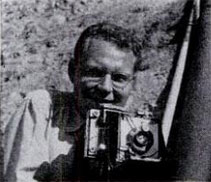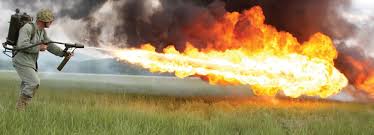 Dead Snakes Can Bite Life magazine photographer George Strock came perilously close to losing his life. He was saved in a manner that has become a Hollywood staple.
Dead Snakes Can Bite Life magazine photographer George Strock came perilously close to losing his life. He was saved in a manner that has become a Hollywood staple.
And after his lucky escape, he took the first published photo of dead American soldiers.
A month or so before he photographed the dead American soldiers, Life magazine photographer George Strock (1911-77) was literally in the firing line while snapping a dead Japanese fighter.
Strock encountered the soldier in a pillbox, set up his camera for a time exposure, and walked a few feet away from the camera. Suddenly, shots rang out. Strock turned and saw that an American officer had fired at something.
That something was the supposedly dead Japanese soldier that Strock has just photographed. “The bastard sat up and was blinking his eyes,” the officer explained.
Strock then took a closer look at the corpse—the now-definitely-dead corpse —and saw that the Japanese soldier was holding a hand grenade: “He sat up and was going to clobber me, and the officer shot him,” Strock explained.
When Strock initially approached the Japanese soldier, “I knew he was dead, laying in a pill-box, all black-faced — no question that he was dead. I took a picture to illustrate how in the pill-box they had palm logs covered with dirt, and the Japs were buried down there. No way to get them out except with a flame thrower.”

When you cut the head off a rattler or other poisonous snake, the critter will be dead but the fangs in the severed head may still contain venom and still deliver a fatal blow. Strock, fortunately, had good backup on that fateful day.###